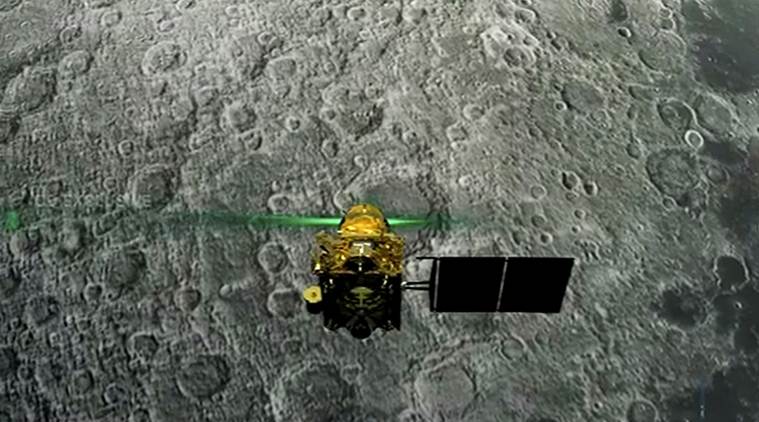
Calling Chandrayaan-2 as a “highly complex mission”, the Indian Space Research Organisation (ISRO) Saturday said, “till date 90 to 95% of the mission objectives have been accomplished, notwithstanding the loss of communication with the Lander.” It also said that the “precise launch” of the orbiter, placed around the moon, has ensured that it will have “a long life of almost 7 years instead of the planned one year.”
The Orbiter, the ISRO said, has already been placed in its intended orbit around the Moon and shall enrich the understanding of the moon’s evolution and mapping of the minerals and water molecules in the Polar Regions, using its eight state-of-the-art scientific instruments. “The Orbiter camera is the highest resolution camera (0.3m) in any lunar mission so far and shall provide high-resolution images which will be immensely useful to the global scientific community,” it said. Follow Chandrayaan-2 UPDATES
Meanwhile, ISRO Chief K Sivan told Doordarshan News that while communication is lost right now, the space agency would try to establish a link for the next 14 days. “The last portion was not executed the right way, in that phase only we lost link with the Lander, and could not establish communication subsequently,” he added.
The latest update from ISRO came hours after India’s ambitious bid to become only the fourth country to achieve a soft landing on the Moon ended in a huge disappointment on Saturday. The Vikram lander of the Chandrayaan-2 failed to make a smooth soft-landing, unable to bring down its speed to the required level.
“Chandrayaan-2 mission was a highly complex mission, which represented a significant technological leap compared to the previous missions of ISRO, which brought together an Orbiter, Lander and Rover to explore the unexplored south pole of the Moon,” ISRO said in its latest update.
EXPLAINED | ISRO’s Vikram Lander is lost, but this hardly matters. Here’s why
The Indian space agency further said that the Vikram lander followed the planned descent trajectory from its orbit of 35 km to just below 2 km above the surface. “All the systems and sensors of the lander functioned excellently until this point and proved many new technologies such as variable thrust propulsion technology used in the lander,” it said.
“The success criteria was defined for each and every phase of the mission and till date 90 to 95% of the mission objectives have been accomplished and will continue contribute to Lunar science , notwithstanding the loss of communication with the Lander,” the ISRO added.
On July 22, India’s Geosynchronous Satellite Launch Vehicle, GSLV MkIII-M1 successfully launched the 3,840-kg Chandrayaan-2 spacecraft into the Earth’s orbit, a week after it was aborted at the last minute due to a technical glitch. The spacecraft then began its journey towards the moon leaving the earth’s orbit on August 14, and entered the lunar orbit on August 20.
On September 2, ‘Vikram’ separated from the orbiter, following which two de-orbiting manoeuvres were performed to bring the lander closer to the moon.
With PTI inputs